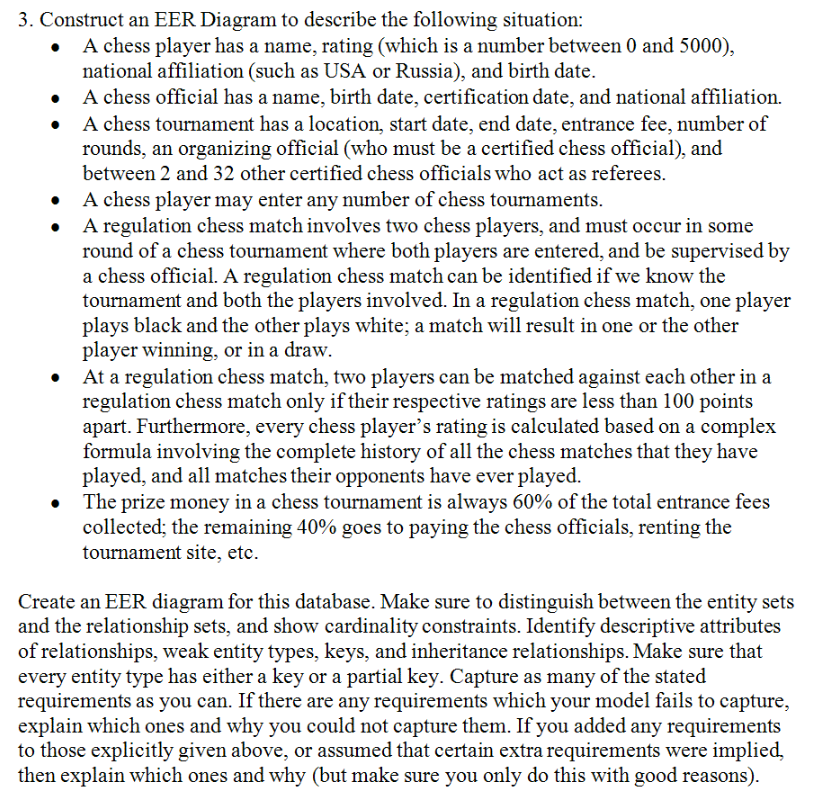Answered step by step
Verified Expert Solution
Question
1 Approved Answer
Please use Chen notation 3. Construct an EER Diagram to describe the following situation: A chess player has a name, rating (which is a number

Please use Chen notation
3. Construct an EER Diagram to describe the following situation: A chess player has a name, rating (which is a number between 0 and 5000), national affiliation (such as USA or Russia), and birth date A chess official has a name, birth date, certification date, and national affiliation. A chess tournament has a location, start date, end date, entrance fee, number of rounds, an organizing official (who must be a certified chess official), and between 2 and 32 other certified chess officials who act as referees A chess player may enter any number of chess tournaments A regulation chess match involves two chess players, and must occur in some round of a chess tournament where both players are entered, and be supervised by a chess official. A regulation chess match can be identified if we know the tournament and both the players involved. In a regulation chess match, one player plays black and the other plays white; a match will result in one or the other player winning, or in a draw. At a regulation chess match, two players can be matched against each other in a regulation chess match only if their respective ratings are less than 100 points apart. Furthermore, every chess player's rating is calculated based on a complex formula involving the complete history of all the chess matches that they have played, and all matches their opponents have ever played. The prize money in a chess tournament is always 60% of the total entrance fees collected: the remaining 40% goes to paying the chess officials, renting the tournament site, etc. . . . . Create an EER diagram for this database. Make sure to distinguish between the entity sets and the relationship sets, and show cardinality constraints. Identify descriptive attributes of relationships, weak entity types, keys, and inheritance relationships. Make sure that every entity type has either a key or a partial key. Capture as many of the stated requirements as you can. If there are any requirements which your model fails to capture explain which ones and why you could not capture them. If you added any requirements to those explicitly given above, or assumed that certain extra requirements were implied, then explain which ones and why (but make sure you only do this with good reasons)Step by Step Solution
There are 3 Steps involved in it
Step: 1

Get Instant Access to Expert-Tailored Solutions
See step-by-step solutions with expert insights and AI powered tools for academic success
Step: 2

Step: 3

Ace Your Homework with AI
Get the answers you need in no time with our AI-driven, step-by-step assistance
Get Started


